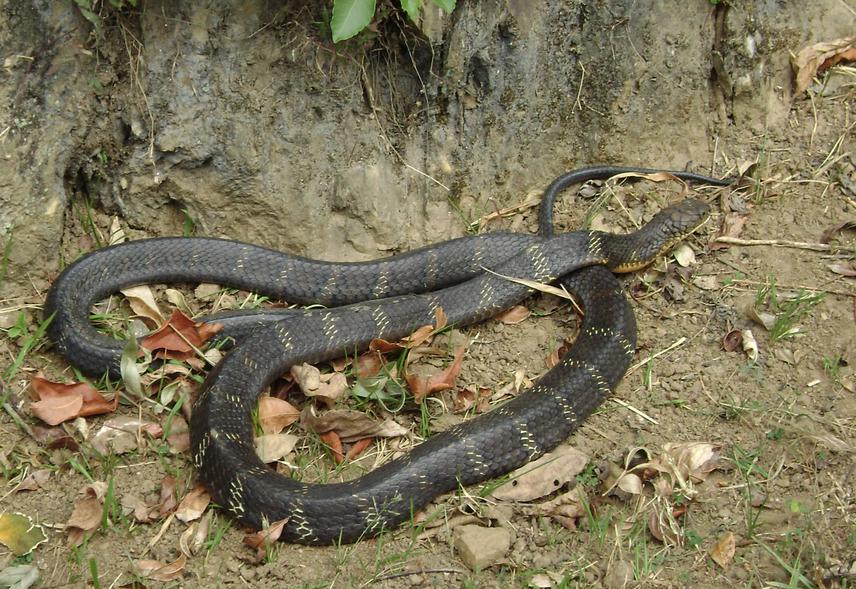Production of first ever colour guide of the amphibians and reptiles in Bhutan to enhance the knowledge of the people to save the herpetofauna.

King cobra
With the funding of RSGF, I studied Amphibians of Punakha-Wangdiphodrang Valley in 2011 and 2012 and I found that lot more needs to be done in this field. As such, producing a pictorial guide became a priority because this work would be very helpful for conservation of this specific group of animals. The study also found people had very limited idea about this taxon and many believe that all snakes are venomous with many people also believing that all frogs can be eaten, an idea very much detrimental to conservation of biodiversity and especially to conservation of herpetofauna. Therefore, a simple field guide on this taxa very similar to the one produced by Ahmed et al., for Northeast Indian species in 2011 through the same funding would work wonder for conservation. Further, this work is expected to help conservationists, forest officials, students of Universities and many other interested individuals to know the species.
The main objectives of this work are:
1. Producing first pictorial guide for people to be aware of the common species
2. Help researchers and interested individuals in identifying the species
3. Make people aware of which species are venomous
4. Increase the biodiversity value of the country
5. Advertise species so they get conservation attention from concerned naturalists so that necessary interventions are made possible if species are declining.
Another important expect of this study is to document the common amphibians and reptiles so that it serves as the basis for future studies. For example, the collected species information can be used to check climate change effects as many amphibians respond to climate change either positively or negatively. Many amphibians are already known to be declining due to change in climate (Stuart et al. 2004; Gibbons et al. 2000) and it is the amphibians and reptiles ecological communities which are expected to move upward in both elevation and latitude (Walther et al. 2002). Amphibian declines studies have documented the role of emerging pathogens and in some cases epidemic outbreaks of particular infections and diseases (Daszak et al. 2003). Altered climatic regimes mean increase pathogen virulence and amphibian and reptile susceptibility to pathogens which can be studied better in future if the status of such nature are recorded today. Therefore, their documentation at the moment will bring definite concrete data for future studies to save the globe besides conserving the species.